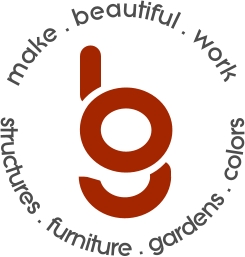

|
eco-conscious design & construction
I first became interested in the nexus of building construction and environmental impact in the late 1980s when I moved to northern California to work for a large construction firm. Pulling in to a pre-bid meeting for a proposed university building at U.C. Santa Clara, I saw several college kids camped out on the future site while others were living high in the branches of ancient redwoods that would be fallen to make space for new facilities. "You're in the way of progress," thought the well-conditioned 22-year-old bidness man me. But something else resonated on a deeper level that had always been there: an unyielding love and respect of nature. That experience drew me into "green building" before it had a name; I've been studying and practicing it ever since. The fundamental principles of sustainable building are ancient and time-tested. Much more practical and efficient than nearly all modern methods that pay little attention to natural surroundings or native materials, this approach uses the elements to heat and cool spaces, provide light, shelter and shade, producing an abode that is deeply rooted in its environment, and simply part of it. A seminal example of this 'primal' architecture are the Anasazi cliff dwellings in Colorado; similar structures and building techniques can be found around the globe that gave rise to complex civilizations with high technology and deep culture that we only vaguely comprehend today.
Cliff Palace at Mesa Verda, Colorado
In the last decade green building ―like agriculture― has been co-opted as another marketing device; today most things marked "sustainable/organic" are anything but. They are the same-ol' same with cosmetic changes and a green sticker slapped on the packaging as this niche has become very fashionable (read: lucrative). This PR device gives well-intentioned but under-informed buyers a sense of purchasing with conscience, but unfortunately is generally promoting more mass consumption, but at higher prices. My approach to conservation is about conservation, based on years of study, practice and real-world experience. I have lost many a job by informing clients that if they truly want to minimize resource usage, instead of replacement, repair/refinish/reuse when feasible is the way to go. If low-impact materials and methods are a priority for your project, whatever designer you choose, be sure to employ someone who provides holistic planning over band-aids and green-labeled materials and components. It will make all the difference in the world. ________________
Passive solar design uses the sun’s rays to directly heat mass and move air. It is the most cost-effective and productive green building strategy there is. With proper site orientation, massing, landscaping, shading, and window placement, energy efficiency and comfort of the building increase dramatically while adding nothing to the overall project cost. If you employ but one sustainable design principle when planning your shelter or addition, it should be passive solar.
|
The most fundamental requirements of sustainable design are often the most overlooked. It is paramount that design and construction be timeless, adaptable and highly durable. Without aesthetic and functional longevity in the finished product, all the green materials in the world will not matter ― they too will wind up on the scrap heap long before they've expired. Therefore, sustainable design is, first and foremost, simply good design. -Gregg Brazel
see also: permaculture |
||
|
___________________________________________________________________________ HOME ABOUT DESIGN/BUILD RESTORATION GARDENWORKS ACCOLADES CONTACT |
|||